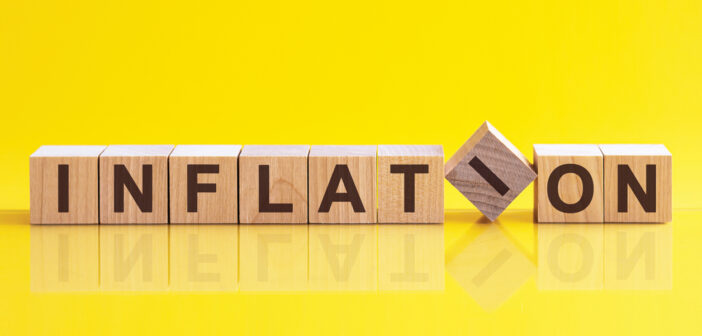At the end of 2023, inflation appeared to be falling to the Federal Reserve’s 2% target. Inflation was 3.3% in December 2023 and was expected to be below 3% in January. However, inflation was higher than expected at 3.1% in both January and February. There is a strong possibility that inflation will continue to run above 3% rather than falling to the Federal Reserve’s 2% target.
Consider that the cause of inflation is an increase in the money supply that is used to purchase goods and services. Since the supply of the former outpaces the latter, prices rise. The failure of the Fed and elected officials to recognize this basic fact led to the doubling of the money supply during the pandemic to fund $5 trillion worth of COVID “stimulus,” resulting in 40-year high inflation.
“Inflation will be a threat so long as federal borrowing and spending are high.”
Reducing inflation thus means reducing the money supply and spending. Reducing the money supply increases interest rates, which is why the money supply fell by 14% in 2022 when the Fed began raising interest rates. However, the Fed has not raised interest rates since last summer and consequently, the money supply has been flat. As I noted in last month’s column, the federal government is still spending a massive amount of money and running a $1.5 trillion budget deficit with hope of balancing it. Given this spending and the Federal Reserve’s backing-off on raising interest rates, it should not be a surprise that inflation continues to exceed expectations.
If inflation continues to run above its 2% target, the Fed will be in a bind; it could decide that higher interest rates are needed and resume its tightening of the money supply. This would likely provoke a decline in the stock market, as the market has already priced-in at least three interest rate cuts in 2024. The Dow Jones dropped over 500 points in February when inflation numbers were released and exceeded expectations, since this increased the likelihood that these rate cuts would not happen. Higher rates would make servicing the debt even more costly for the federal government, which is on track to pay $1 trillion in interest on the debt this year, as well as threaten a recession.
The Federal Reserve could choose not to raise rates and just declare that 3% is its new inflation target, rather than 2%. This sounds like a minor distinction, but 3% inflation means a dollar loses half of its purchasing power every 23 years, compared to that taking 35 years when inflation is 2%.
Politicians and Fed officials have put themselves in a bind regarding inflation. Reducing inflation requires reducing spending and the money supply. There is little effort at the federal level to reduce federal spending or the budget deficit. The Congressional Budget Office forecasts that the deficit will exceed $1 trillion per year over the next decade, with it hitting a projected $2.6 trillion in 2034. Inflation will be a threat so long as federal borrowing and spending are high.














